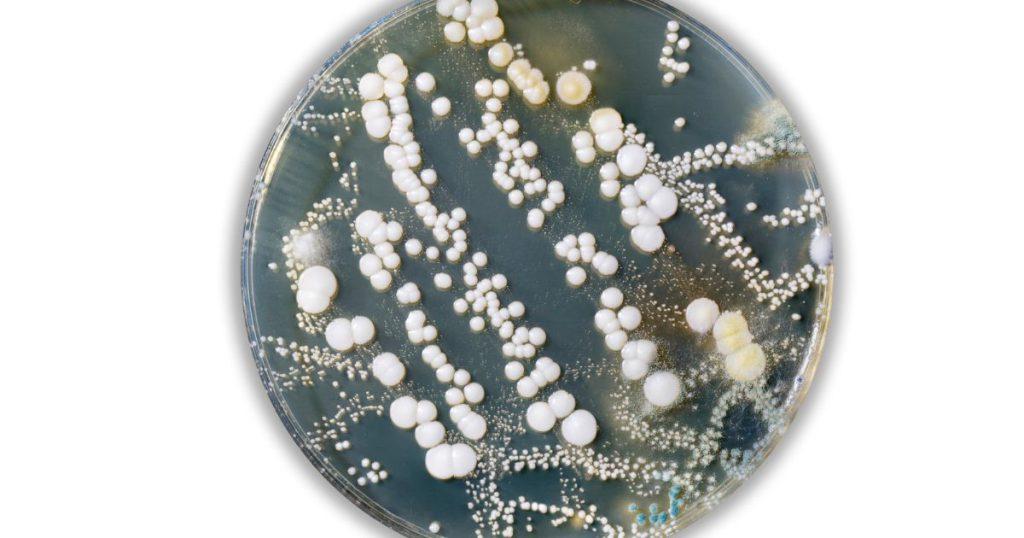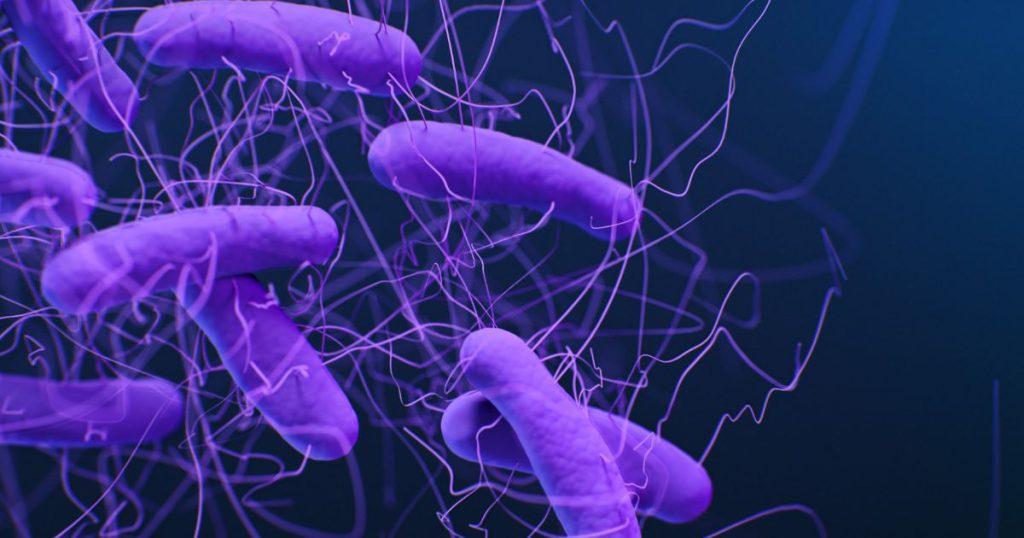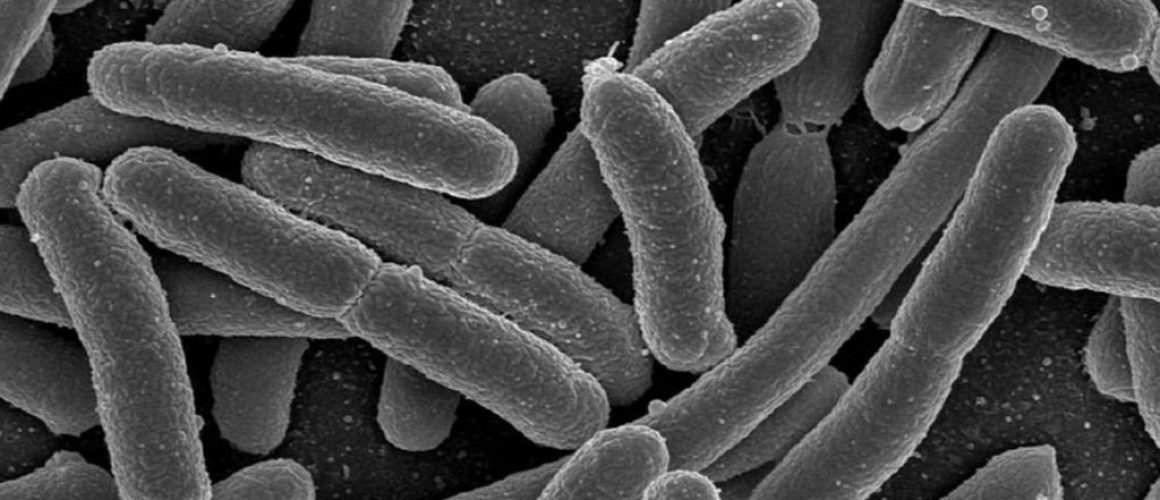The Role of Bacteriology in Disease Diagnosis
Table of Contents
Key Summary Table: Bacteriology
| Key Aspects | Details |
|---|---|
| Definition | Bacteriology is the branch of microbiology that focuses on the study of bacteria. |
| Importance | Understanding bacteria is crucial for diagnosing and treating bacterial infections, combating antibiotic resistance, and understanding many natural processes. |
| Role in Healthcare | Bacteriology aids in diagnosing bacterial infections and diseases, guides treatment decisions, and helps control the spread of infections within healthcare facilities. |
| Challenges | Antibiotic resistance is a major challenge in bacteriology, making infections harder to treat and increasing the risk of disease spread, severe illness, and death. |
Explore the fascinating world of Bacteriology and its pivotal role in disease diagnosis. Learn about bacterial infections, antibiotic resistance, and the techniques used in clinical bacteriology to identify and combat diseases. A must-read for medical technology students and professionals.

Introduction
Bacteriology, the branch of microbiology that focuses on bacteria, plays a crucial role in the field of medical technology. As microscopic single-celled organisms, bacteria are ubiquitous in our environment, and while many are harmless or even beneficial, others can cause serious diseases. Understanding these organisms, their behaviors, and their interactions with the human body is crucial for diagnosing and treating bacterial infections. In this blog post, we will delve into the world of bacteriology, exploring its significance in medical technology, and how it aids in disease diagnosis. We’ll also discuss some common bacterial infections and diseases, and the role of clinical bacteriology in a healthcare setting.
Antibiotic resistance occurs when bacteria evolve mechanisms to withstand the drugs designed to kill them. This makes infections harder to treat and increases the risk of disease spread, severe illness, and death.
Bacteriology is a fascinating field that has a profound impact on our health and wellbeing. It’s a subject that’s constantly evolving, with new discoveries and advancements being made regularly. This blog post aims to provide a comprehensive overview of bacteriology, its role in disease diagnosis, and its significance in medical technology. Whether you’re a medical technology student, a healthcare professional, or simply someone interested in the science of bacteria, this post will provide valuable insights into this fascinating field.
In this post, we’ll start by understanding what bacteriology is and why it’s important. We’ll then delve into the world of bacterial infections and diseases, before discussing how bacteriology aids in disease diagnosis. Finally, we’ll explore the field of clinical bacteriology and its role in healthcare. So, let’s dive in and explore the microscopic world of bacteria and its impact on our health.
Understanding Bacteriology
| Bacteria Characteristics | Description |
|---|---|
| Diversity | Thousands of different species known to science. |
| Role | Some bacteria are beneficial, aiding in processes such as digestion and nutrient cycling, while others can cause diseases. |
| Study Importance | Understanding bacteria can help develop new ways to combat bacterial diseases and understand many natural processes. |
Bacteriology is the scientific study of bacteria – microscopic, single-celled organisms that inhabit virtually every environment on Earth. These organisms are incredibly diverse, with thousands of different species known to science. Some bacteria are beneficial, aiding in processes such as digestion and nutrient cycling, while others, known as pathogenic bacteria, can cause diseases in humans, animals, and plants.
The study of bacteria is crucial for many reasons. For one, understanding how bacteria function, grow, and interact with their environment can help us develop new ways to combat bacterial diseases. This is particularly important in the face of increasing antibiotic resistance, a major global health concern. Furthermore, bacteria play key roles in many natural processes, from nutrient cycling in the environment to digestion in our own bodies.
Bacterial pathogens, on the other hand, are bacteria that can cause disease. These organisms can invade the human body, evade the immune system, and cause a variety of illnesses, from minor skin infections to life-threatening conditions like pneumonia or meningitis. Understanding these pathogens, how they cause disease, and how our bodies respond to them, is a key part of bacteriology and a crucial aspect of medical technology.

Bacterial Infections and Diseases
| Common Bacterial Diseases | Causing Bacteria |
|---|---|
| Tuberculosis | Mycobacterium tuberculosis |
| Lyme disease | Borrelia burgdorferi |
| Strep throat, Certain types of pneumonia | Streptococcus pneumoniae |
Bacteria are responsible for a wide range of infections and diseases. Some of the most common bacterial diseases include tuberculosis, caused by Mycobacterium tuberculosis, and Lyme disease, caused by Borrelia burgdorferi. Other well-known bacterial infections include strep throat, urinary tract infections, and certain types of pneumonia.
Bacterial diseases are caused when pathogenic bacteria invade the body and begin to multiply. Some bacteria produce toxins that damage tissues and organs, while others directly invade and damage the cells they infect. The symptoms of a bacterial infection depend on the type of bacteria and the area of the body that’s affected. They can range from mild symptoms like a sore throat or skin rash, to severe and life-threatening conditions like septicemia or meningitis.
It’s important to note that not all bacteria are harmful. In fact, our bodies are home to trillions of bacteria, most of which are harmless or even beneficial. These ‘good’ bacteria help us digest food, protect against disease-causing bacteria, and even produce vitamins. It’s a delicate balance, and when it’s disrupted – for example, by an overgrowth of pathogenic bacteria – it can lead to disease. Understanding this balance, and how to restore it when it’s disrupted, is another key aspect of bacteriology.
The Role of Bacteriology in Diagnosis
| Diagnostic Techniques | Description |
|---|---|
| Bacterial Culture | Growing bacteria in a controlled environment for identification based on their growth characteristics and appearance. |
| Gram Stain | A method of staining bacterial cells to identify their type based on the properties of their cell walls. |
| Molecular Techniques (e.g., PCR) | Identify bacteria based on their genetic material. Faster and more accurate than traditional methods. |
Bacteriology plays a crucial role in disease diagnosis. By studying bacteria and their behaviors, medical technologists can identify the cause of a bacterial infection and determine the best course of treatment. One of the main techniques used in bacteriology for disease diagnosis is bacterial culture. This involves growing bacteria in a controlled environment, such as a petri dish, which allows for the identification of the bacteria based on their growth characteristics and appearance.
Another important technique is the Gram stain. This is a method of staining bacterial cells that helps identify their type – Gram-positive or Gram-negative – based on the properties of their cell walls. This information can be crucial in determining the type of infection and the best treatment approach. For instance, Gram-negative bacteria are often more resistant to antibiotics than Gram-positive bacteria, so identifying the type of bacteria can help guide antibiotic treatment.
In addition to these traditional techniques, advances in technology have led to the development of new diagnostic tools in bacteriology. For example, molecular techniques such as polymerase chain reaction (PCR) can be used to identify bacteria based on their genetic material. These techniques are faster and more accurate than traditional methods, allowing for quicker diagnosis and treatment.

Clinical Bacteriology
Clinical bacteriology is a specialized branch of bacteriology that focuses on the identification and characterization of bacterial pathogens that cause disease in humans. While general bacteriology may study all types of bacteria, clinical bacteriology is specifically concerned with those that have an impact on human health.
In a healthcare setting, clinical bacteriologists work closely with other healthcare professionals to diagnose and manage bacterial infections. They might work in a hospital laboratory, for example, analyzing samples from patients and identifying any bacterial pathogens. They also play a key role in monitoring and controlling the spread of bacterial infections within the healthcare facility, such as in the case of hospital-acquired infections.
Clinical bacteriology is also crucial in the development and testing of new antibiotics. With antibiotic resistance on the rise, there is a constant need for new drugs that can effectively combat bacterial infections. Clinical bacteriologists play a key role in this process, from the initial identification of potential drug targets, to the testing of new drugs for efficacy and safety.
Bacteriology and Antibiotic Resistance
| Antibiotic Resistance Aspects | Description |
|---|---|
| Definition | When bacteria evolve mechanisms to withstand the drugs designed to kill them. |
| Impact | Makes infections harder to treat and increases the risk of disease spread, severe illness, and death. |
| Role of Bacteriology | Helps understand and combat antibiotic resistance by studying the mechanisms of resistance and finding new ways to treat resistant infections. |
The concept of antibiotic resistance is a critical aspect of bacteriology that has significant implications for public health. Antibiotic resistance occurs when bacteria evolve mechanisms to withstand the drugs designed to kill them. This resistance can be a natural phenomenon or can be accelerated by the misuse and overuse of antibiotics. In the context of bacteriology, understanding antibiotic resistance is crucial because it directly impacts the effectiveness of treatment strategies for bacterial infections.
Bacteriology plays a pivotal role in understanding and combating antibiotic resistance. By studying the genetic and biochemical mechanisms that bacteria use to resist antibiotics, bacteriologists can develop new strategies to combat resistance. For instance, bacteriologists can identify new drug targets in bacteria or design antibiotics that can bypass the resistance mechanisms. Furthermore, bacteriology research can help in the development of diagnostic tests that quickly identify antibiotic-resistant bacteria, enabling healthcare providers to prescribe the most effective treatment promptly.
Moreover, bacteriology research contributes to public health strategies aimed at controlling the spread of antibiotic resistance. By tracking the emergence and spread of antibiotic-resistant bacteria, bacteriologists can provide valuable data that inform public health policies. For example, this data can guide policies on the use of antibiotics in healthcare and agriculture, which are key drivers of antibiotic resistance. Additionally, bacteriology research can inform the development of vaccines and other interventions that reduce the need for antibiotics, thereby slowing the emergence of resistance.
Case Study: Diagnosis of a Bacterial Infection
Let’s consider a hypothetical case study to illustrate how bacteriology is used in diagnosing a bacterial infection. Imagine a patient, John, who presents with a high fever, cough, and difficulty breathing. The symptoms suggest a possible bacterial infection in the lungs, such as pneumonia. The first step in diagnosing John’s condition would be to collect a sample, such as sputum or blood, for bacterial culture.
In the laboratory, the sample would be spread on a culture medium and incubated to allow any bacteria present to grow. After a suitable growth period, a bacteriologist would examine the culture for visible growth colonies. The appearance of these colonies can provide initial clues about the type of bacteria causing the infection. For instance, certain bacteria produce colonies of specific colors or shapes.
To identify the bacteria more precisely, the bacteriologist would perform a Gram stain, a technique that differentiates bacteria into two broad groups based on the properties of their cell walls. Further tests, such as biochemical tests or genetic tests, could then be performed to identify the bacteria at the species level. In John’s case, these tests might identify Streptococcus pneumoniae, a common cause of bacterial pneumonia. This diagnosis would then guide the choice of antibiotics for treatment, ensuring that John receives the most effective therapy for his infection.
Bacteriology, the branch of microbiology that focuses on bacteria, plays a crucial role in the field of medical technology.

Conclusion
In this blog post, we’ve delved into the fascinating world of bacteriology and its crucial role in disease diagnosis. We’ve explored how bacteriology helps us understand the nature of bacteria, including pathogenic bacteria that cause diseases. We’ve also discussed how bacteriology aids in diagnosing bacterial infections and diseases, and the techniques used in this process, such as bacterial culture and Gram stain.
We’ve also touched on the field of clinical bacteriology and its importance in a healthcare setting. Clinical bacteriologists work at the intersection of laboratory science and patient care, using their expertise to guide the diagnosis and treatment of bacterial infections. Finally, we’ve looked at the critical issue of antibiotic resistance and how bacteriology helps us understand and combat this global health threat.
In conclusion, bacteriology plays a vital role in our healthcare system. From diagnosing diseases to informing treatment strategies and combating antibiotic resistance, the study of bacteria is crucial to improving patient outcomes and public health. As we continue to face new challenges,
This post is part of my Bacteriology category. Also check out my index page on Bacteriology.
Other pages of interest: Gram staining and interpretation and Bacterial structure and cell morphology
Disclaimer: This blog post is based on my personal experiences and learnings in the field of Medical Technology. It’s intended for informational purposes only and should not be used as a replacement for professional medical advice.
FAQ
What is bacteriology?
Bacteriology is the branch of microbiology that focuses on the study of bacteria. This includes understanding their structure, growth, development, genetics, biochemistry, ecology, and their role in causing diseases in humans and other animals.
How does bacteriology aid in disease diagnosis?
Bacteriology plays a crucial role in disease diagnosis. Techniques such as bacterial culture and Gram staining are used to identify the presence of bacteria in patient samples. The identification of specific bacteria can help diagnose a variety of diseases.
What is the role of bacteriology in the healthcare setting?
In a healthcare setting, bacteriology is used to detect and identify bacteria that cause infections. This information can guide treatment decisions, including the selection of appropriate antibiotics. Bacteriology can also be used in infection control, helping to track the source of hospital-acquired infections.
What is antibiotic resistance and how is it related to bacteriology?
Antibiotic resistance occurs when bacteria evolve mechanisms to withstand the drugs designed to kill them. This makes infections harder to treat and increases the risk of disease spread, severe illness, and death. Bacteriology helps in understanding and combating antibiotic resistance by studying the mechanisms of resistance and finding new ways to treat resistant infections.
What is a bacterial culture?
A bacterial culture is a method used in bacteriology to multiply bacteria by letting them reproduce in predetermined culture media under controlled laboratory conditions. It is one of the primary diagnostic methods used to isolate and identify bacteria in patient samples.
Sources
- Evaluation of Bi-Lateral Co-Infections and Antibiotic Resistance Rates among COVID-19 Patients: This study discusses the prevalence of bacterial co-infections in COVID-19 patients and the associated antibiotic resistance rates. It highlights the importance of bacteriology in identifying these co-infections and determining the most effective treatment options. This relates to the blog post as it underscores the role of bacteriology in diagnosing bacterial infections, even in the context of other diseases like COVID-19.
- MDR Pathogens Organisms as Risk Factor of Mortality in Secondary Pulmonary Bacterial Infections Among COVID-19 Patients: Observational Studies in Two Referral Hospitals in West Java, Indonesia: This observational study focuses on the impact of multi-drug resistant (MDR) pathogens in secondary pulmonary bacterial infections among COVID-19 patients. It emphasizes the critical role of bacteriology in identifying these MDR pathogens and managing patient treatment. This is relevant to the blog post as it demonstrates the importance of bacteriology in diagnosing and treating bacterial infections, particularly those resistant to multiple drugs.
- Secondary bacterial infections and antibiotic resistance among tungiasis patients in Western, Kenya: This research paper discusses the prevalence of secondary bacterial infections and antibiotic resistance among patients with tungiasis, a parasitic skin disease. It highlights the role of bacteriology in diagnosing these secondary infections and determining antibiotic resistance. This aligns with the blog post’s discussion on how bacteriology aids in disease diagnosis and understanding antibiotic resistance.
- Prevalence of Antibiotic Resistance of ESKAPE Pathogens Over Five Years in an Infectious Diseases Hospital from South-East of Romania: This study examines the prevalence of antibiotic resistance among ESKAPE pathogens (Enterococcus faecium, Staphylococcus aureus, Klebsiella pneumoniae, Acinetobacter baumannii, Pseudomonas aeruginosa, and Enterobacter species) over a five-year period in a Romanian hospital. It underscores the importance of bacteriology in monitoring antibiotic resistance trends, which is crucial for effective disease management. This is relevant to the blog post as it demonstrates the role of bacteriology in understanding and combating antibiotic resistance.
Sean Schepers is a third-year Medical Technology student at Mahidol University with a passion for all things health and medicine. His journey into the world of medicine has led him to explore various fields. Sean's blog posts offer a unique perspective, combining his academic insights with personal experiences. When he's not studying or blogging, Sean enjoys keeping up with politics and planning his future career in medicine.
In addition to his studies, Sean serves as the chairman of the Rights, Liberties, and Welfare Committee, a role that reflects his commitment to advocacy and social justice. Beyond his academic pursuits, Sean offers tutoring services in English and Biology, further demonstrating his dedication to education and mentorship. His journey is one of continuous discovery, and he invites others to join him as he explores the dynamic and transformative world of medical technology.


